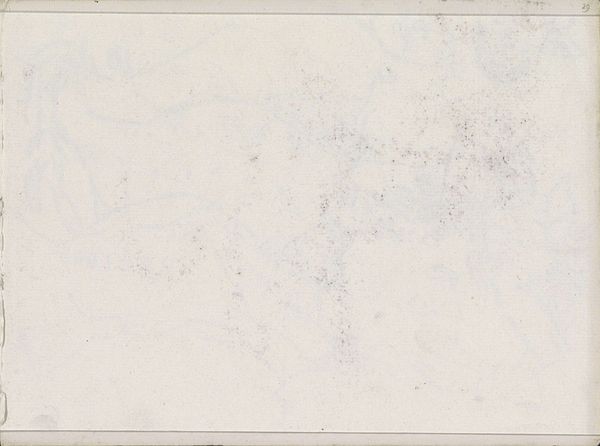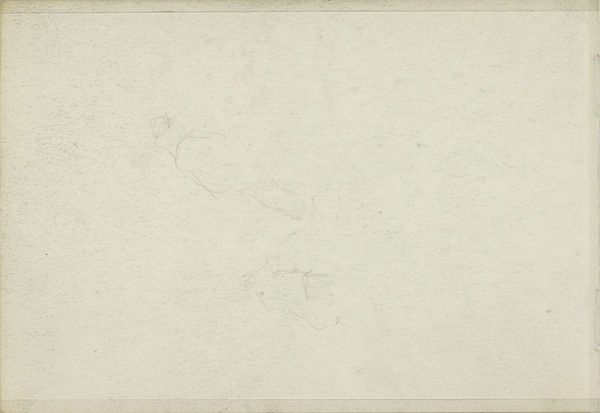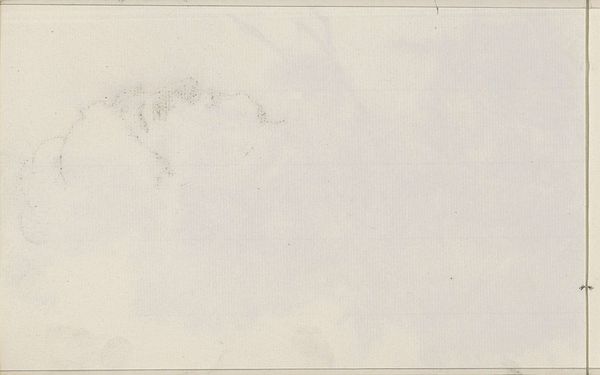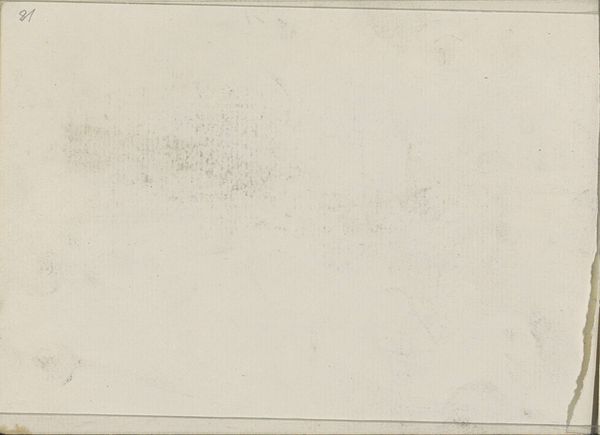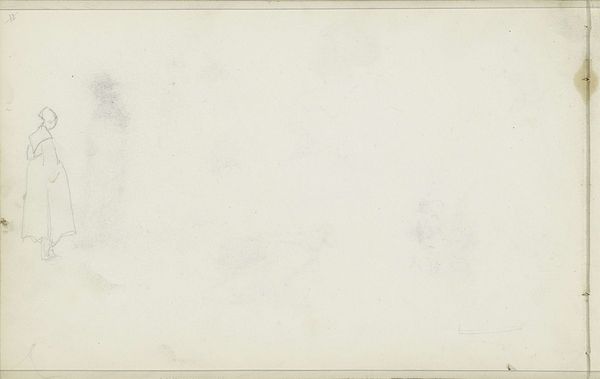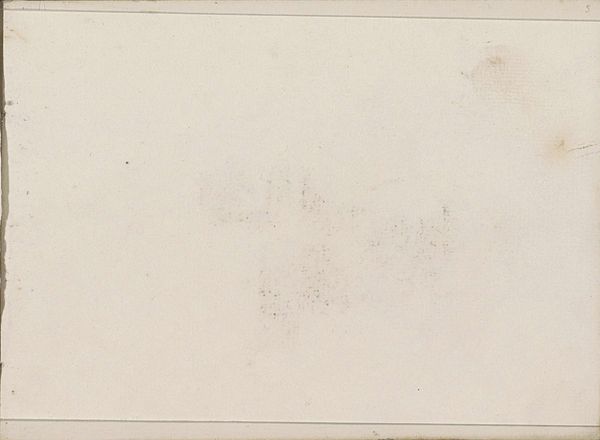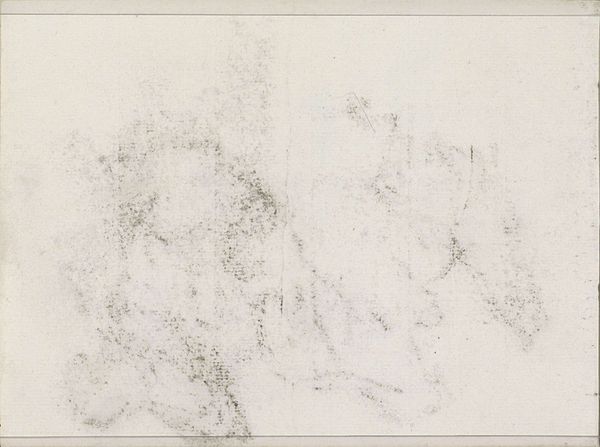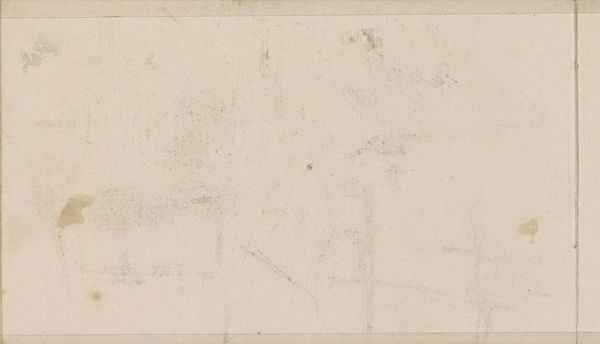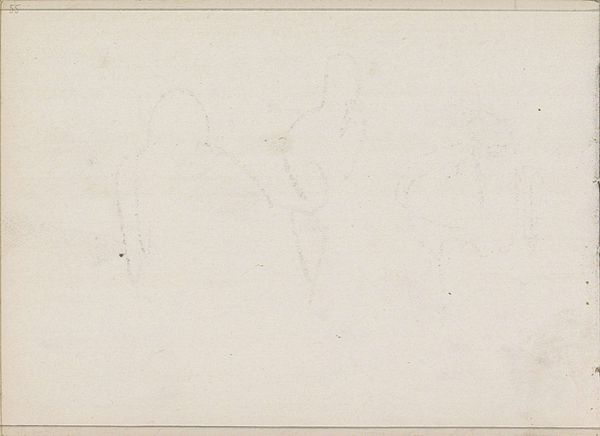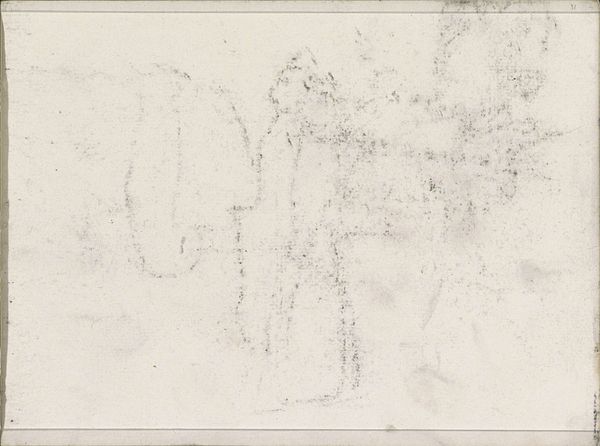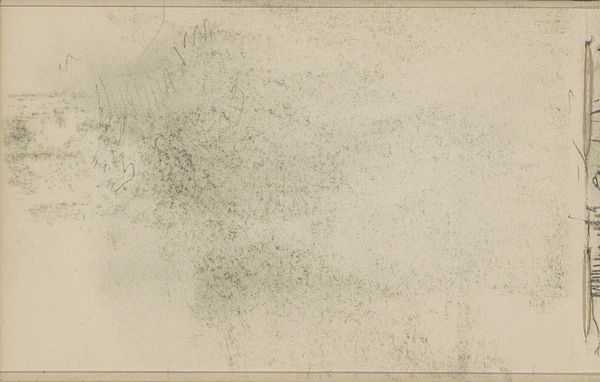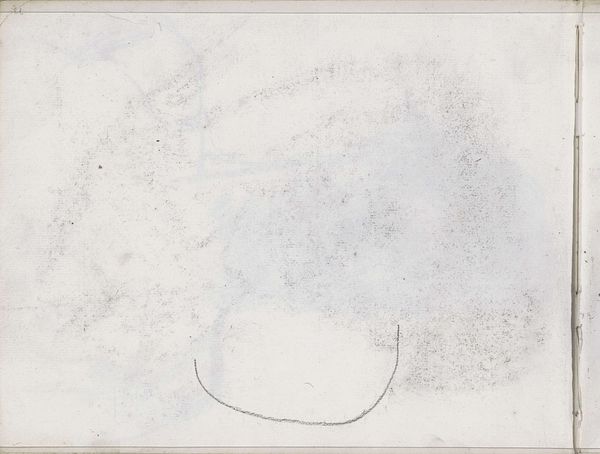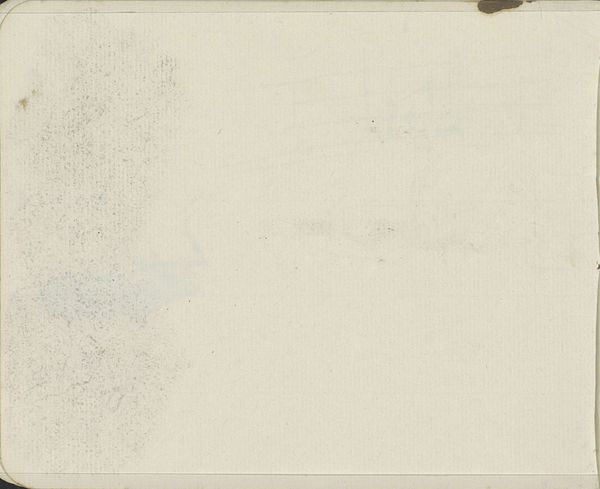
Copyright: Rijks Museum: Open Domain
Curator: Well, this appears to be a faint ghost of an image! There's something very delicate about this drawing. Editor: Indeed. We are looking at "Abklatsch van de krijttekening op pagina 6" by Isaac Israels, dating from between 1875 and 1934. It’s currently held here at the Rijksmuseum. The piece employs pencil on paper, an interesting study in the potential of minimalist drawing. Curator: Minimalist is putting it mildly. I’m captivated by how the subtle pencil strokes manage to evoke a sense of form, of volume. You can almost sense the landscape even though it's barely there, it really embraces incompleteness. What can you tell us about its role? Editor: Within Israels’ oeuvre, sketches like this function as both preparatory studies and, in their own right, records of fleeting impressions. The time period coincided with the impressionist movement and the popularization of readily available drawing media like sketchbooks and pencils—drawing was more and more becoming an activity that just about anyone could undertake to record or visualize the environment they encountered on a daily basis. Its creation coincided with major shifts in both artistic vision and societal perspective on the arts and labor of image making. Curator: It’s a quiet subversion, isn't it? Challenging what constitutes a 'finished' work of art, or perhaps blurring the lines of art and documenting an experience. Editor: Absolutely. Furthermore, consider the socio-economic context. Amsterdam in the late 19th century was undergoing rapid industrialization. Capturing these landscapes in the impressionist manner reflects an artist making sketches in the fields around industrialising centres like Amsterdam. There were rapid population growths because workers left the farmlands, so it’s interesting that these quiet landscapes can also function as critiques on the increasing focus on productivity, urbanization, and their consequences. Curator: This really urges you to confront the essence of the image making act. The very idea of visual transcription is brought to light by the artist here through restraint. Editor: It's thought-provoking, isn't it? It prompts us to reassess how art mirrors and challenges society simultaneously, showing an interest for landscapes in industrialising regions of the Netherlands in particular. Curator: Agreed. This little pencil sketch, for all its modesty, has revealed rather a lot about shifting artistic and social landscapes.
Comments
No comments
Be the first to comment and join the conversation on the ultimate creative platform.
